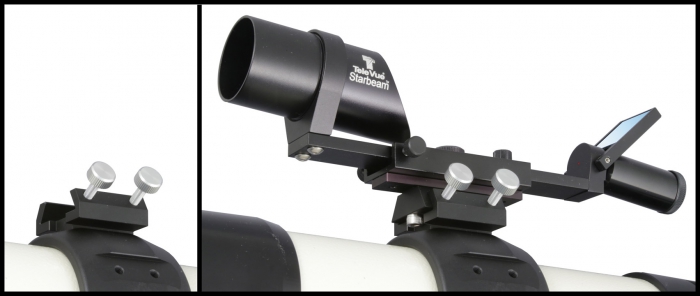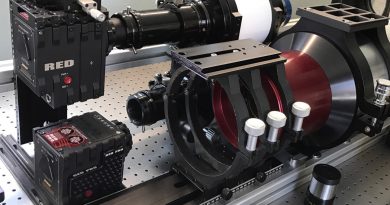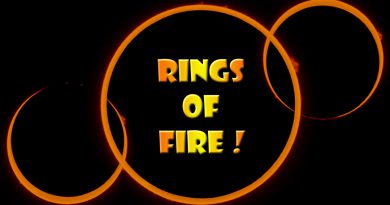New! Quick Release Tele Vue Starbeam!
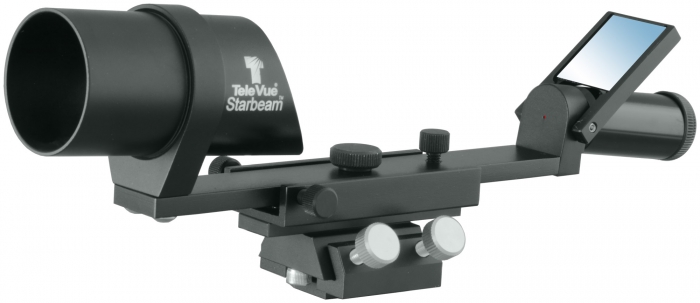
Starbeam has long been the highest quality, unit-power finder companion for the amateur astronomer. Looking through its 40mm glass lens you see an unamplified, natural sky background with a 10 arc-minute (1/3 Moon diameter) collimated “red-star” superimposed over it. Alignment adjustment is built in to Starbeam so no tools are required to align it with your scope. For high-angle targets, the unique flip mirror feature saves your knees and neck by letting you look down into the mirror to see the reflection of the sky. This elegantly designed finder comes in three mounting versions for Tele Vue rings, Newtonian scopes, and Schmidt–Cassegrain scopes.
The Tele Vue version of the Starbeam has been updated with a quick-release mounting system. The SRT-2010 (SRT stands for (S)tarbeam, (R)emovable, (T)ele Vue) employs our existing Quick Release Bracket (QRB-1002) and the Dovetail (QRD-1006) system. The Quick Release Bracket mounts to channels in Tele Vue single ring mounts and dual mount rings with two supplied screws. The Dovetail comes mounted to the base of the Starbeam. This new mounting arrangement allows Starbeam to be easily swapped in and out of the Quick Release Bracket for transportation or use on different scopes and without the need to touch the Starbeam’s alignment. If you choose to leave the Starbeam on your scope, you can still close the lid on your Tele Vue case. The Dovetail also allows Starbeam to mount on Orion and Sky-Watcher finder shoes as well as on select models from other manufacturers.
Those who already have the Tele Vue version of the Starbeam for their Tele Vue rings can upgrade to the quick release system only if the U-Channel has two through holes as shown below. Simply order the Tele Vue Quick Release Bracket QRB-1002 (two 10-32 x 3/8 button head screws not included) and Dovetail (QRD-1006) from your favorite dealer. (Older models with just a single through hole cannot securely mount the QRD-1006)
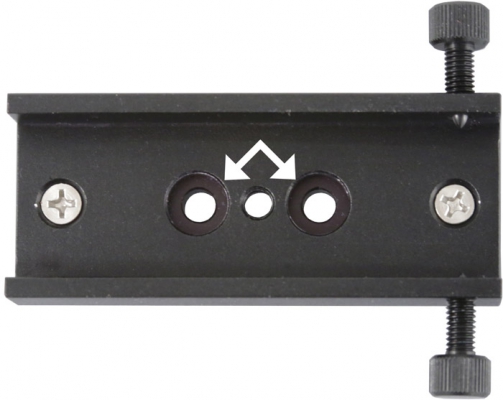
Did you observe, sketch, or image with Tele Vue gear? We’ll like your social media post on that if you tag it #televue and the gear used. Example:
#televue #tv85 #powermate #venus
Penumbral Lunar Eclipse (June 5th)
On June 5th this week, Europe, Africa, Asia, Australia, and the south-east coast of South America will witness at least part of the Penumbral Lunar Eclipse. This slow-moving event will peak at 19:25:02 UT as the Moon passes through the edges of Earth’s shadow causing it’s southern hemisphere to darken slightly.
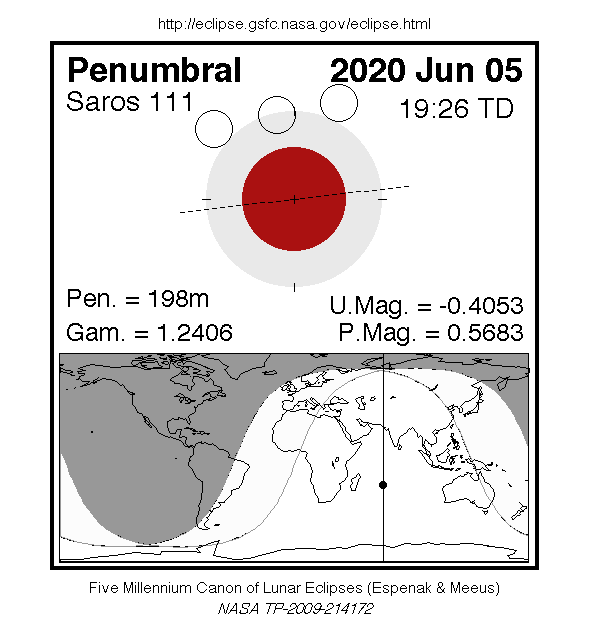
The best way to prove to your friends an eclipse took place at all is with a time-lapse video showing the Moon “dipping its toes” in the Earth’s shadow. A smartphone with a time-lapse app makes it easy to do this. To reasonably enlarge the size of the Moon, you’ll need to image through your telescope with the smartphone. We recommend using the sturdy clamp-arms of Tele Vue’s FoneMate™ connected to a compatible low-power Tele Vue eyepiece. A tracking mount for your scope will help keep the Moon in view during the time-lapse.
More Info
- Starbeam system on our website (mobile site).


